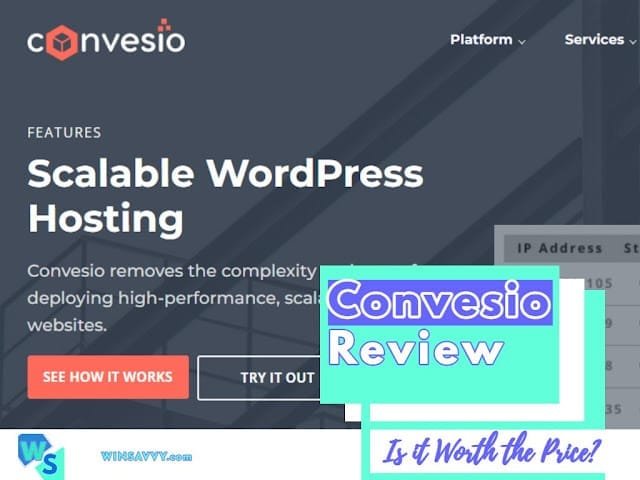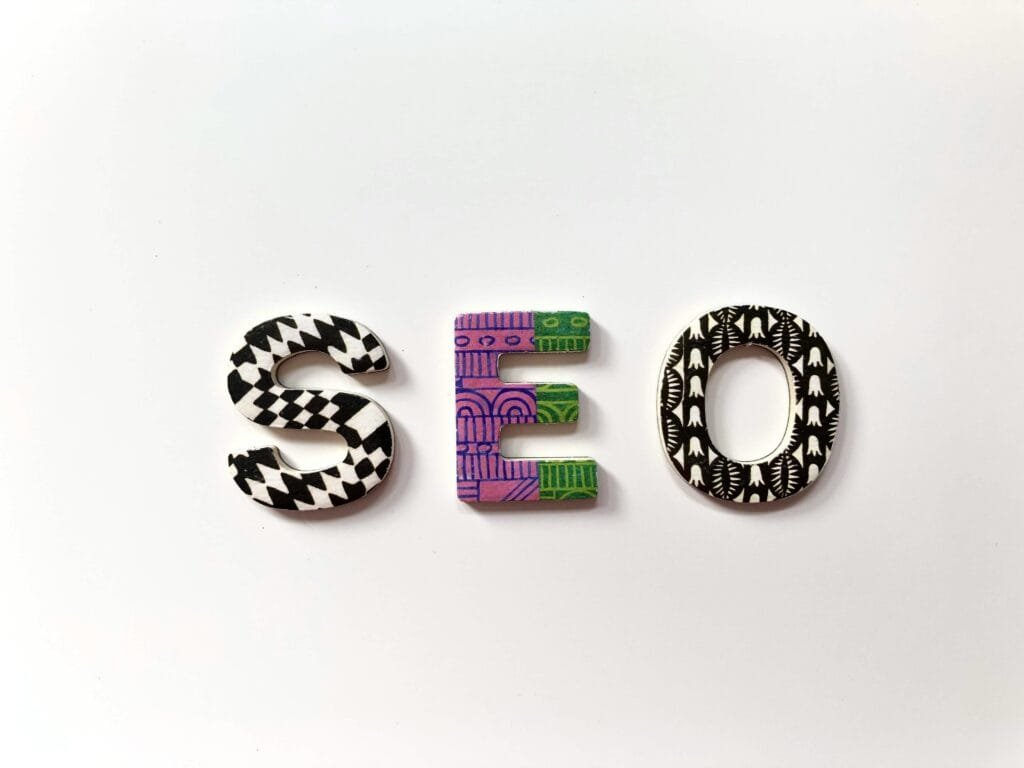Understanding PPC for Manufacturing
Pay-Per-Click (PPC) marketing is a powerful tool for manufacturing businesses. It allows them to efficiently reach potential customers actively searching for products or services within their industry. Below, we will define PPC marketing and explore the benefits it offers specifically for manufacturers.
Defining PPC Marketing
PPC, or Pay-Per-Click, is a digital advertising strategy where advertisers place ads on search engine result pages (SERPs) or other websites. Advertisers only pay when someone clicks on their ad, making it a cost-effective marketing tool (Matrix Marketing Group). This strategy ensures that the budget is spent only on potential leads, increasing the likelihood of conversions.
Key features of PPC include:
- Ads can appear on Google, Bing, LinkedIn, and other platforms.
- Businesses set a budget, which can be adjusted based on performance.
- Keywords play a crucial role in targeting the right audience.
A typical PPC ad setup might look like this:
| Metric | Description |
|---|---|
| Keyword | Specific terms manufacturers want to target |
| CPC (Cost-per-Click) | Amount paid for each click on the ad |
| CTR (Click-through Rate) | Percentage of people who click on the ad after seeing it |
| Conversion Rate | Percentage of clicks that result in a desired action (e.g., request for a quote) |
Benefits of PPC for Manufacturers
PPC marketing offers several advantages for manufacturers aiming to expand their client base in B2B markets:
Targeted Reach: PPC allows manufacturers to target specific keywords that potential clients are searching for. This ensures that the ads reach individuals and businesses actively looking for related products or services.
Cost Efficiency: With PPC, manufacturers only pay when a potential client clicks on the ad, which can lead to higher ROI compared to traditional advertising.
Immediate Results: Unlike SEO, which can take time to show results, PPC campaigns can drive immediate traffic to a manufacturer’s website. This is particularly useful for promoting new product launches or time-sensitive offers.
Measurable Data: PPC platforms provide detailed analytics on campaign performance, including CPC, CTR, and conversion rates. This data helps manufacturers fine-tune their marketing strategies for better outcomes. Explore more on manufacturing lead generation strategies.
Brand Visibility: PPC ads appear above organic search results, enhancing the visibility of a manufacturing company in competitive markets.
For a deeper dive into digital marketing strategies tailored for manufacturers, visit our guide on digital marketing for manufacturers, or learn how to align PPC with other practices like SEO for the manufacturing industry.
Integrating PPC into a comprehensive marketing strategy can help manufacturing businesses reach new heights. Learn more about related tactics in our manufacturing marketing strategies article.
Key PPC Metrics for Manufacturers
Understanding key PPC metrics is crucial for manufacturing businesses aiming to optimize their digital marketing campaigns. These metrics provide valuable insights into the effectiveness and efficiency of PPC strategies.
Cost-Per-Click (CPC)
Cost-Per-Click (CPC) is the amount paid for each click on a PPC ad. For manufacturers, managing CPC effectively ensures that the budget is spent efficiently and generates a solid return on investment. On average, every $1.60 invested in Google Ads can generate $3 in revenue or return on ad spend (Theia Strategies).
Understanding and optimizing CPC can help manufacturing businesses achieve better ROI. Tools like Google Ads provide insights into average CPCs across different keywords and industries, allowing for better budget allocation.
| Metric | Average Value |
|---|---|
| Cost Per Click | $1.60 – $3 ROI |
Click-Through Rate (CTR)
Click-Through Rate (CTR) measures the percentage of people who click on an ad after seeing it. A high CTR indicates that the ad is relevant and compelling to the target audience. For manufacturers, CTR is an important performance indicator that reflects the effectiveness of their ad copy and targeting strategies.
CTR is closely monitored alongside other metrics such as website sessions, goal conversion rates, and engagement with content (Agency Analytics). Improving CTR can be achieved through precise keyword targeting, compelling ad headlines, and clear calls-to-action (CTAs).
| Metric | Importance |
|---|---|
| Click-Through Rate | Indicates ad relevance and effectiveness |
Conversion Rate
Conversion Rate measures the percentage of users who complete a desired action after clicking on a PPC ad. For manufacturing businesses, conversions might include form submissions, quote requests, or e-commerce sales. PPC has proven to bring in 50% more conversions than organic advertising through search results or social media (Theia Strategies).
Optimizing conversion rates involves enhancing landing page experiences, ensuring clear and persuasive CTAs, and continually testing different ad variations.
| Metric | Advantage |
|---|---|
| Conversion Rate | 50% more conversions than organic |
Monitoring these key PPC metrics enables manufacturing businesses to assess and adjust their PPC strategies effectively. By focusing on CPC, CTR, and conversion rate, manufacturers can drive better results and achieve their marketing objectives.
For more on how to integrate PPC with other digital marketing strategies, visit our sections on seo for manufacturing industry and manufacturing marketing automation.
Implementing a Successful PPC Strategy
A successful PPC strategy for manufacturing businesses requires clearly defined goals, precise audience segmentation, and compelling ad copy. These steps ensure that PPC campaigns accurately target potential clients and deliver effective results.
Setting Clear Goals
Setting clear goals is the foundational step for any PPC campaign. Manufacturers should focus on defining specific, measurable objectives to guide their strategy. These goals can include increasing website traffic, generating leads, or boosting product sales. A realistic budget should be decided based on these goals to ensure that every dollar spent is maximized for effectiveness (Matrix Marketing Group).
| Goal | Metric |
|---|---|
| Increase Website Traffic | Number of Website Visits |
| Generate Leads | Number of Conversions |
| Boost Product Sales | Sales Revenue |
For further tips on setting marketing objectives, visit our article on manufacturing marketing strategies.
Target Audience Segmentation
Accurately segmenting the target audience is crucial for reaching the right clients. Manufacturing businesses often operate in B2B markets, making it important to define the audience based on industry, job role, company size, and geographical location. This segmentation ensures that the ads are shown to individuals who are most likely to be interested in the products or services offered.
| Segment | Criteria |
|---|---|
| Industry | Manufacturing, Automotive, Aerospace |
| Job Role | Plant Owner, Operations Manager, Marketing Executive |
| Company Size | Small, Medium, Large Enterprises |
| Location | United States, Europe, Asia |
Identifying the ideal audience can be facilitated by using insights from previous marketing campaigns and customer data. For more information on targeting strategies, check out our article on b2b manufacturing marketing tactics.
Effective Ad Copywriting
Compelling ad copy is essential for attracting the attention of potential clients. The ad copy should clearly convey the value proposition and include a strong call-to-action (CTA). Manufacturers should use relevant keywords in their ad copy to increase visibility and ensure the ad resonates with the target audience (Matrix Marketing Group).
Key Components of Effective Ad Copy:
- Headline: Should be attention-grabbing and include relevant keywords.
- Description: Provide a concise explanation of the product or service.
- CTA: Encourage the viewer to take the desired action, such as “Get a Free Quote” or “Learn More.”
Example of Ad Copy:
Headline: "High-Quality Industrial Machinery for Manufacturers"
Description: "Boost your production efficiency with our state-of-the-art machinery. Contact us for a free consultation."
CTA: "Learn More"
Crafting persuasive and targeted ad copy can significantly increase the click-through rate (CTR) and conversion rate. For additional guidance on creating engaging content, read our article on manufacturing content marketing.
By setting clear goals, segmenting the target audience, and writing effective ad copy, manufacturing businesses can implement a successful PPC strategy to enhance their digital marketing efforts and achieve their objectives.
Leveraging PPC Platforms
For manufacturing businesses aiming to expand their B2B client base, utilizing the right Pay-Per-Click (PPC) platforms is essential. Each platform offers unique opportunities and benefits that can be tailored to meet specific marketing goals.
Google Ads
Google Ads is a powerful tool for manufacturers due to the sheer volume of searches it handles. With an average of 5.8 billion searches daily (Theia Strategies), Google Ads allows businesses to target specific keywords that trigger search ads. This platform includes features such as keyword targeting, ad extensions, and various bidding strategies to help optimize your campaigns.
Key Benefits:
- High Reach: The large number of daily searches means a higher likelihood of reaching potential customers.
- Targeting Options: Advanced keyword targeting, geographic targeting, and demographic targeting help reach specific audiences.
- Performance Tracking: Detailed analytics and reporting tools allow for easy performance measurement and campaign adjustments.
| Feature | Description |
|---|---|
| Average CPC | $1-$2 for the manufacturing segment |
| Conversion Rate | Higher efficiency with well-targeted keywords |
| ROI | Typically higher due to vast search volume |
For more insights on digital marketing for manufacturers, explore our detailed guide.
Bing Ads
Bing Ads, now known as Microsoft Advertising, is another platform worth considering. Although it has a smaller market share compared to Google, it can still be a cost-effective option for reaching a specific audience.
Key Benefits:
- Lower Competition: Less competition on Bing Ads can result in lower Cost-Per-Click (CPC) rates.
- Demographic: Bing users tend to be older and higher-income, making it ideal for targeting decision-makers.
- Integration: Easy integration with Google Ads campaigns for streamlined management.
| Feature | Description |
|---|---|
| Average CPC | Generally lower than Google Ads |
| Conversion Rate | Comparable, with potential for higher due to targeted ads |
| ROI | Good option for budget-conscious campaigns |
For more PPC strategies, visit our b2b manufacturing marketing tactics section.
LinkedIn Advertising
LinkedIn Advertising is particularly effective for B2B marketing. With LinkedIn, manufacturers can target ads to professionals based on job titles, industries, and other specific criteria.
Key Benefits:
- Professional Audience: Direct access to decision-makers and professionals in relevant industries.
- Precise Targeting: Target ads based on professional attributes such as job title, company size, and industry.
- Engagement: Higher engagement rates from a professionally oriented audience.
| Feature | Description |
|---|---|
| Average CPC | Higher compared to Google and Bing, but with high-quality leads |
| Conversion Rate | Higher due to targeted professional audience |
| ROI | Potentially higher due to precise professional targeting |
For a comprehensive approach, consider integrating your PPC efforts with other strategies like SEO and social media marketing to maximize results.
Exploring and utilizing these PPC platforms can significantly amplify your manufacturing marketing strategies. Focus on targeting the right audience, optimizing ad copy, and continuously measuring performance to drive growth and achieve your goals.
Optimizing PPC Campaigns
Optimization is crucial for maximizing the effectiveness of PPC campaigns within the highly competitive manufacturing sector. Below, we focus on specific strategies that can enhance your pay-per-click efforts.
Keyword Research and Optimization
Effective keyword research is fundamental to any successful PPC campaign. For manufacturing businesses, employing long-tail keywords can be more cost-effective and specific, driving higher conversion rates. Tools like Wordstream’s keyword planner can help assess the costs and search volumes of relevant keywords (Sixth City Marketing).
| Keyword Type | Volume | Cost-Per-Click (CPC) | Conversion Rate |
|---|---|---|---|
| Short-Tail – “Manufacturing” | High | High | Low |
| Long-Tail – “Custom Steel Manufacturing” | Medium | Medium | High |
| Specific – “Automotive Parts Supplier in Texas” | Low | Low | Very High |
Regularly updating and refining keywords is essential. Consider targeting users in specific locations, age ranges, and income levels for higher effectiveness in your campaigns (Sixth City Marketing).
Ad Scheduling and Budgeting
Scheduling your ads to run during peak operational hours can significantly enhance your campaign’s performance. Understanding your target audience’s behavior and adjusting your ad schedule accordingly can lead to more clicks and conversions. Utilize the scheduling features available on platforms like Google Ads to set your ads for the best times.
Similarly, effective budgeting ensures that your ad spend is used optimally. Allocate higher budgets to keywords and times that show better performance. Use data from previous campaigns to inform your budget decisions and ensure you’re getting the most ROI from your ad spend.
| Ad Schedule | Time Frame | Estimated Budget | Performance |
|---|---|---|---|
| Weekdays (8 AM – 6 PM) | High Traffic | $500/day | High |
| Weekends (10 AM – 4 PM) | Medium Traffic | $300/day | Medium |
| Night (6 PM – 10 PM) | Low Traffic | $100/day | Low |
A/B Testing and Landing Page Optimization
A/B testing allows you to refine your ad copy, images, and calls-to-action (CTAs) to see which variations perform best. For manufacturing PPC campaigns, testing different value propositions and unique selling points can help identify the most compelling messages.
Once visitors click on your ads, they should land on an optimized page that aligns with their search intent. Ensuring that your landing pages are user-friendly, load quickly, and contain relevant information can significantly improve conversion rates. Regularly analyze landing page performance and make necessary adjustments to improve user experience and conversion metrics.
When implementing A/B tests, keep the following metrics in mind:
| A/B Test Element | Variation A | Variation B | Conversion Rate |
|---|---|---|---|
| Ad Copy | “Custom Manufacturing Solutions” | “High-Quality Manufacturing Services” | A: 5%, B: 7% |
| Image | Product Photo | Manufacturing Process Photo | A: 6%, B: 8% |
| CTA | “Get a Quote” | “Contact Us Today” | A: 5%, B: 9% |
By focusing on keyword research, effective ad scheduling, and consistent A/B testing paired with landing page enhancements, manufacturing businesses can significantly improve their PPC campaigns, driving higher conversions and better ROI. Consider integrating these strategies with your wider digital marketing efforts to amplify their effectiveness.
Measuring PPC Success
For manufacturing businesses, measuring the success of PPC campaigns is crucial to ensure efforts are effective and delivering a return on investment.
Tracking Performance Metrics
Understanding and tracking key performance metrics is fundamental for any PPC strategy. Important metrics include:
| Metric | Description |
|---|---|
| Click-Through Rate (CTR) | Measures the number of clicks your ad receives divided by the number of times your ad is shown. |
| Conversion Rate | The percentage of users who take the desired action after clicking on your ad, such as submitting a contact form or requesting a quote. |
| Cost-Per-Click (CPC) | The amount you pay each time someone clicks on your ad. |
| Landing Page Conversion Rate | The percentage of users who convert after landing on your page. |
Tracking landing page conversion rates is particularly significant as it helps determine if users are taking desired actions on landing pages. Regular A/B testing can help improve these rates by identifying which elements resonate best with your audience. Visit our guide on digital marketing for manufacturers for more insights.
Adjusting Strategies for Improvement
Analyzing metrics provides valuable insights into what elements of your campaign are working and which need adjustment. For instance, if your PPC conversion rates are low, it may be necessary to:
- Refine your ad copy to make it more compelling.
- Optimize landing pages based on user behavior and A/B testing results.
- Adjust targeting to better reach your ideal audience segments.
- Modify bids to ensure effective budget allocation.
Keeping track of Key Performance Indicators (KPIs) such as sales-qualified leads or goal conversion rates is essential for making strategic decisions (Agency Analytics). For more strategies, check out our resources on manufacturing marketing strategies.
ROI Analysis and Reporting
Once the campaigns are continuously tracked and optimized, it’s time to evaluate the return on investment (ROI). A thorough ROI analysis involves:
- Calculating Total Campaign Spend: Sum of all costs associated with your PPC campaigns.
- Measuring Revenue Generated: Calculating sales or leads attributed to PPC efforts.
- Determining ROI: Compare the revenue generated to the total spend to determine profitability.
| Metric | Formula | Description |
|---|---|---|
| ROI | (Revenue - Cost) / Cost * 100% | Measures the profitability of your campaign. |
| Cost per Conversion | Total Cost / Number of Conversions | Determines the average cost to acquire a conversion. |
| CPA (Cost per Acquisition) | Total Cost / Number of Acquisitions | Similar to cost per conversion but focuses on acquiring customers. |
Regular reporting on these metrics helps manufacturing businesses see tangible results and adjust strategies for continuous improvement (Sixth City Marketing). For more on integrating PPC with other digital marketing tactics, visit our articles on manufacturing content marketing and social media marketing for manufacturers.
The Role of PPC Automation
The increasing complexities and demands of digital marketing make PPC automation a valuable asset for manufacturing businesses looking to optimize their advertising campaigns. Leveraging machine learning and sophisticated software, PPC automation can help streamline processes and maximize efficiency.
Benefits of PPC Automation
Efficiency and Time-Saving
PPC automation uses software to automatically optimize PPC management through robotic process automation and computer algorithms (Neil Patel). This efficiency allows marketers to control Google ad campaigns effortlessly, saving valuable time.
Improved Performance
Automated tools can significantly improve the performance of campaigns. They help increase click-through rates (CTR) and conversion rates by continuously monitoring and adjusting bids, targeting, and other settings as needed. This optimization is crucial in today’s ultra-competitive landscape (Neil Patel).
Data-Driven Decisions
Automation systems utilize extensive data analysis to make informed decisions. This means adjustments are based on real-time data, which leads to more accurate and effective campaign strategies.
| Benefits | Description |
|---|---|
| Efficiency and Time-Saving | Uses algorithms to manage and optimize campaigns |
| Improved Performance | Enhances key metrics like CTR and conversion rates |
| Data-Driven Decisions | Real-time data improves accuracy of decisions |
| Competitive Edge | Helps stay ahead in a competitive market |
Types of PPC Automation Tools
Comprehensive Software Suites
These all-in-one solutions offer a wide range of features, including bid management, ad optimization, budget allocation, and performance tracking. Example tools include Google Ads automated rules and platforms like Adalysis.
Analysis Tools
These tools focus on performance metrics and analytics. They help identify strengths and weaknesses in your campaigns. Tools like SEMrush and SpyFu offer competitor analysis and keyword research functionalities that can greatly enhance your PPC strategy (Neil Patel).
| Tool Type | Features |
|---|---|
| Comprehensive Software Suites | Bid management, ad optimization, budget allocation, performance tracking |
| Analysis Tools | Performance metrics analysis, competitor research, keyword research |
For more advanced strategies on incorporating PPC into your overall marketing plan, explore sections on digital marketing for manufacturers and b2b manufacturing marketing tactics.
Competitor Research Platforms
Platforms like SpyFu and iSpionage provide invaluable insights into your competitors’ strategies. Understanding what works for them can help fine-tune your own approach and identify potential opportunities for improvement.
The role of automation in PPC is critical for manufacturing businesses aiming to scale their marketing efforts. As automation tools become more advanced, they offer numerous benefits and options to make PPC management more efficient and effective. Explore how PPC can align with other marketing strategies by checking our articles on seo for manufacturing industry and manufacturing content marketing.
Integrating PPC with Other Digital Marketing Strategies
To leverage PPC for manufacturing businesses effectively, integrating it with other digital marketing strategies such as SEO, email marketing, and social media is crucial. This holistic approach ensures that manufacturers maximize their reach and achieve their marketing goals.
SEO Alignment
SEO (Search Engine Optimization) is vital for improving the appearance and positioning of web pages in organic search results. It enhances the quality and quantity of website traffic (Shanahan Strategy). Aligning PPC with SEO efforts can significantly boost visibility and attract potential leads from search engines like Google and Bing.
Key SEO Techniques:
- Content Optimization: Tailoring website content to attract business clients and end consumers.
- Performance Improvement: Enhancing website performance and user experience.
- Technical SEO Audits: Conducting comprehensive site audits to identify and fix issues.
- Link Building: Developing strategic link-building activities to increase domain authority.
Table: Comparison of SEO and PPC
| Aspect | SEO | PPC |
|---|---|---|
| Traffic Type | Organic | Paid |
| Cost | Generally Low | Varies (based on CPC) |
| Time to See Results | Long-term | Immediate |
| Effect Duration | Sustainable | As long as budget lasts |
For more on SEO strategies, visit our page on SEO for manufacturing industry.
Email Marketing Integration
Email marketing remains a powerful tool for nurturing leads and maintaining customer relationships. By integrating PPC with email marketing, manufacturers can drive targeted traffic to their landing pages and capture email addresses for continued engagement.
Effective Tactics:
- Lead Magnets: Offering valuable content (e.g., industry reports, eBooks) in exchange for email sign-ups.
- Segmentation: Dividing email lists based on customer behavior and preferences.
- Personalization: Sending personalized email campaigns to increase engagement.
Benefits of Integration:
- Enhanced targeting with customized ad copy based on email segments.
- Retargeting customers who have shown interest in previous email campaigns.
- Strengthening brand recall through consistent messaging across both channels.
To explore more strategies, check our guide on digital marketing for manufacturers.
Social Media Synergy
Social media platforms offer vast opportunities for reaching a broad audience. Integrating PPC with social media marketing can amplify your brand’s presence and engagement.
Social Media Platforms:
- LinkedIn: Ideal for B2B marketing, enabling direct targeting of business professionals.
- Facebook/Instagram: Useful for broad outreach and engagement.
- Twitter: Effective for industry news and updates.
Strategies:
- Content Sharing: Promoting PPC content on social media to drive traffic and engagement.
- Audience Insights: Utilizing social media analytics to refine PPC targeting.
- Ad Syncing: Running synchronized campaigns across PPC and social media for cohesive messaging.
For more insights, refer to our article on social media marketing for manufacturers.
Integrating PPC with other digital marketing strategies creates a robust, multi-channel approach that not only drives immediate traffic but also fosters long-term growth for manufacturing businesses. By aligning PPC with SEO, email marketing, and social media, manufacturers can ensure comprehensive coverage and maximized returns.


















